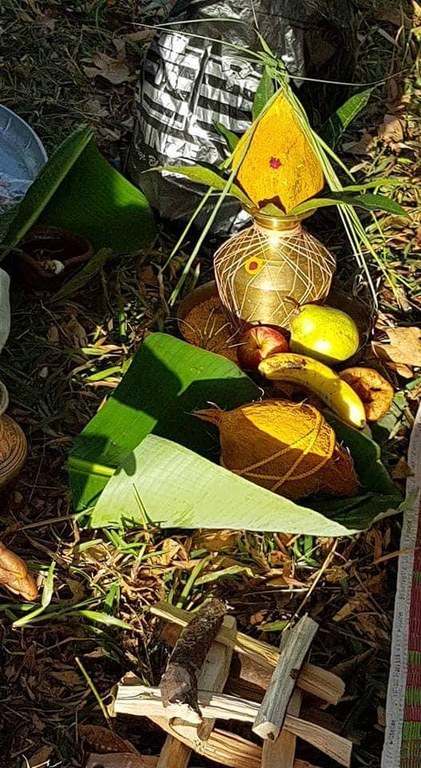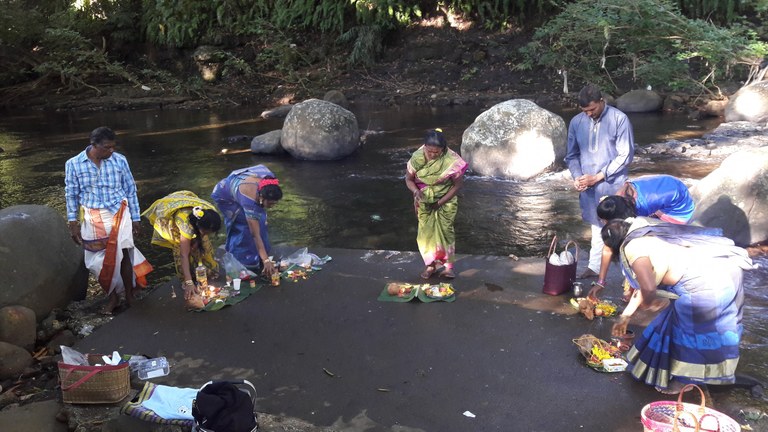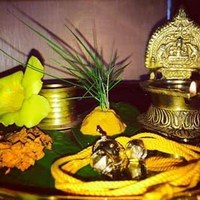Aadi Padinettam Perrukku
Click here for the Tamil version of the article
Tamils
Very long time ago the civilization of Tamils reached the greatest of heights. Their way of life, their cultures, their progress are all well explained in the Sangam literature. The anciety and predominance and distinction are great guidance for a way of living not only for Tamillians but for the whole world.
The Tamil literature are said to be more than 2500 years old. Birth place of Tamillian are said to be from the sunken land called kumara kandam from history of the three periods (muchangam). With time Tamil culture and tradition flourished.

A Brief of the Tamil Culture
Since the beginning of Tamil Periods many festivals has been celebrated by the Tamil civilization. Many more cultural festivals cropped up during multiple periods of the Tamil time society's time line. As a very culturally conservative race the Tamil preserved their culture and religion by still celebrating almost all of the festivals celebrated by the ancients. Likewise, Tamil people from Mauritius are also trying to preserve their culture and tradition. Cavadee, Thimidhee, Sivaratree, Thai Pongal, Adi padinettaam Perukku are examples of some festivals that are celebrated by the Tamils of Mauritius.
Adi padinettam perukku
Tamillians all around the world celebrate Adi Perukku near a river or sea on the 18th of the month of Aadi. The meaning of Perukku means Rise. "The flood on the 18th of the Month of Aadi" is exact translation for the festival names. As history recorded it is during this particular month itself that the majestic river Kaaveri in Tamil Nadu is flooded with rain water. The upcoming of this flood is celebrated by Tamillian on the 18th in the month of Aadi. Hence it is why we say this is the month to pray Maariammen. As the word Maari itself means rain. So Maariammen means Rain goddess. With all the rain in that month, the presence of the goddess can be felt. It is also said that one must not start any new adventure within this period, though it can also be related to the harsh rainy weather associated to this month. But the 18th of this month is the only day in this month is considered to be very auspicious. There is a special force present on that day. That is why the 18th of month Aadi is very important. On this day there are many Tamil people gathered near river banks for this celebration. We may say it is mostly a festival for ladies and girls. This particular day is very important for married couples. The ladies from the Tamil community goes to the Kaveri river (or other rivers if you can't go there) to perform the ceremony of changing the Taali thread for a new one (Taali is the yellow colored thread chain that Married Tamil women wear around their neck). This change is said to be the renewal of the marital vows. Hence it is a reminder to them to believe in their vows taken during the marriage day. Ladies and girls consider the river as a virgin girl and pray to her. On that day not only married women but single ones also wear a yellow thread around their neck, though for the single ones, it is to get a perfect suitor (though it is sometimes a simpler thread for those who are single ). Aadi Perukku has a spiritual significance of promising abundance into a person`s life when prayers are offered to the Mother Goddess on this day of rising.
Stories related to Adi padinettam perukku
Hindu sacred scriptures mention Goddess Parvati as Gomati prayed to Lord Shiva to be blessed with a vision of Shiva and Vishnu together. Shiva appeared to her on this day of Aadi Perukku as SankaraNarayana in a place called Sankarankovil.
Hence, the day is auspicious for all material and spiritual pursuits. It is the day to see your wishes fulfilled and abundance to touch your lives.
Goddess Parvati is worshipped in this month with special rituals. She is offered 18 types of rice dishes.
Excerpts from literature
There are many references about the festival of Adi Perukku in the sangam books. “A female poet named Adi Madiyar found her once lost husband at the place where the river Kaveri meets with the sea on the 18th of the Month Adi.”
“In the Month of Adi the Kaveri River is flooded with water. Couples are praying to the goddess and lighting oil lamps. This kind of reference is spread all over the sangam book.
There is also reference to the celebration of this festival in the great epic called sillappadeegaram.

The way it is done
On that day the people of the Tamil community will normally wake up early and take a bath. Then they get dressed In their traditional clothes along with Tumeric, kungumam, bracelets and chain. After that they will set off for the river bank with their husband.
Before going to the river bank they prepare a mix rice preparation very early in the morning as a tradition. After preparing rice dishes like Lemon rice, Coconut Rice, Tamarind rice, Pongal they start their journey to the river. On arriving at the river bank they will select a place for them to pray and will put a banana leaf first. Them on that banana leaf they will place a saffron ball representing god Vinayagan over a betel leaf. Saffron, kunkumam, the Taali thread, flowers, bananas, pongal and coconut is also placed on the banana leaf. After the coconut is broken camphor is lit to perform a prayer. Then they put everything along with the banana leaf in the river. Then the lady along with the help of her husband will tie the new tali around her neck. After this they bend to touch the feet of elders in order to seek their blessings. At the end whatever food is brought is shared among people gathered around. This festival is celebrated is order to thank Goddess Kaveri.

Note: if you want to contribute article, videos and events, or you want to simply be part of our team, please join us on our Facebook page and send us a message there. Everyone can contribute articles and pictures to Tamils.mu, if you have something to share with us, please drop us a message!
